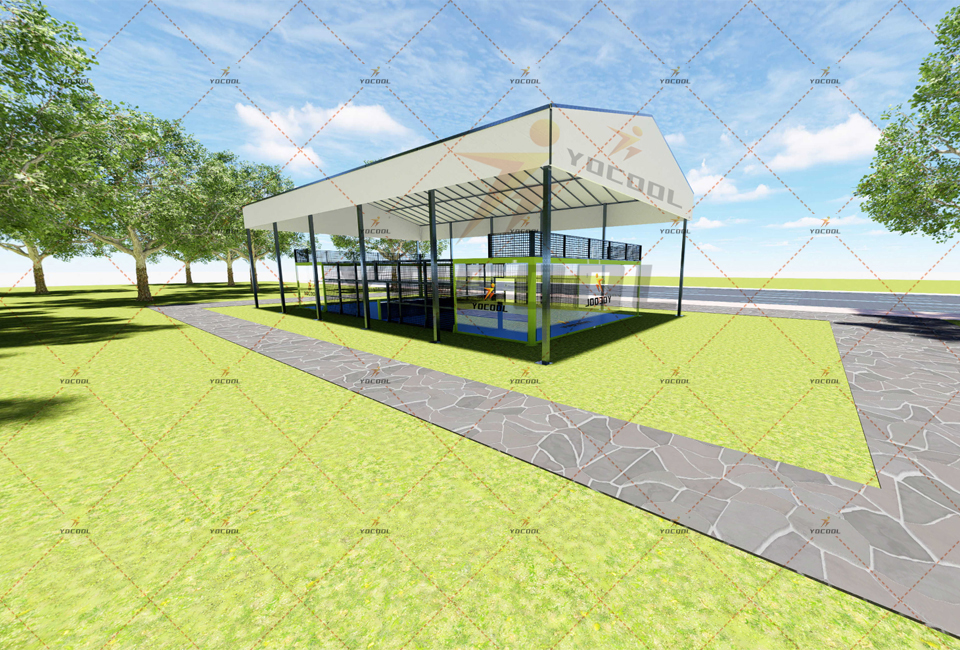

Racquetball and Tennis A Comparative Analysis of Two Popular Racquet Sports
Racquetball and tennis are two dynamic racquet sports that attract millions of players and spectators worldwide. While both share similarities, such as the use of a racquet and a ball, they differ significantly in rules, playing environments, and gameplay strategies. This article aims to explore the fundamental characteristics of racquetball and tennis, highlighting their unique attributes while also examining the factors that make each sport enjoyable.
Playing Environment and Equipment
The most striking difference between racquetball and tennis is the playing environment. Racquetball is typically played indoors in a four-walled court, which allows for a unique dynamic where the ball can bounce off any wall. Players use a solid racquet to hit a small, hollow rubber ball that is designed to bounce aggressively. In contrast, tennis is played on either indoor or outdoor courts, which are larger and have specific boundary lines. The court surface can also vary, with options like clay, grass, and asphalt affecting gameplay and strategy. Tennis players use a strung racquet and a felt-covered rubber ball, which travels faster than the racquetball.
Rules and Game Structure
The rules governing each sport also differ considerably. In racquetball, players are allowed to serve from various positions within a designated area, and the objective is to hit the ball in such a way that the opponent cannot return it before it strikes the ground twice. The game can be played in singles or doubles format, and matches are often played to 15 or 11 points, with players needing to win by at least two points.
Tennis, on the other hand, consists of a more complex scoring system including games, sets, and matches. Players serve from alternating sides of the court and must hit the ball over the net into the opponent's court, adhering to boundary lines. Points are scored based on the inability of the opponent to return the ball within the prescribed limits. Matches can last for several hours, especially in professional play, making stamina and strategy essential.

Gameplay and Strategy
Gameplay in racquetball is fast-paced and dynamic, requiring quick reflexes and agile movements. The constant movement between the walls demands a player to have excellent spatial awareness and an ability to anticipate their opponent's next move. Players often employ a variety of shots such as drives, lobs, and trick shots to gain an advantage, and the enclosed nature of the court magnifies the intensity of rallies.
In tennis, while speed is also important, strategy plays a more significant role due to the larger playing area and the importance of positioning. Players must consider the angle and placement of their shots, as well as their physical condition throughout the match. The use of spins, including topspin and backspin, can also influence the game's pace, making it crucial for players to develop a well-rounded skill set.
Popularity and Accessibility
Both racquetball and tennis have their dedicated fan bases and offer social benefits. Tennis has a more extensive global presence, with numerous professional tournaments such as Wimbledon and the US Open drawing large audiences and media coverage. Conversely, racquetball, while less mainstream, is appreciated for its accessibility and is often played in community centers and gyms, making it easy to learn for beginners.
In conclusion, racquetball and tennis are both exhilarating racquet sports, each with its unique set of challenges and appeals. While tennis enjoys wider recognition and a larger following, racquetball offers a thrilling experience characterized by its fast pace and strategic gameplay within an enclosed court. Whether you prefer the elegance of tennis or the breathtaking speed of racquetball, both sports provide exceptional opportunities for fitness, competition, and camaraderie among players of all skill levels.
High-Performance Industrial Flooring Solutions China Paddle Tennis Court for Sale
High-Performance Industrial Flooring Solutions Durable & Cost-Effective
Homogeneous Transparent Floor – Durable & Stylish Rubber Floor Solutions
Premium Homogeneous Transparent Floor for Durable & Stylish Spaces Rubber Floor Solutions
Premium Sports Floor Solutions Durable PVC Sports Floor & Rubber Floor for Gyms
Durable Rubber Composite Floor Premium Rubber Floor & Mats Solutions